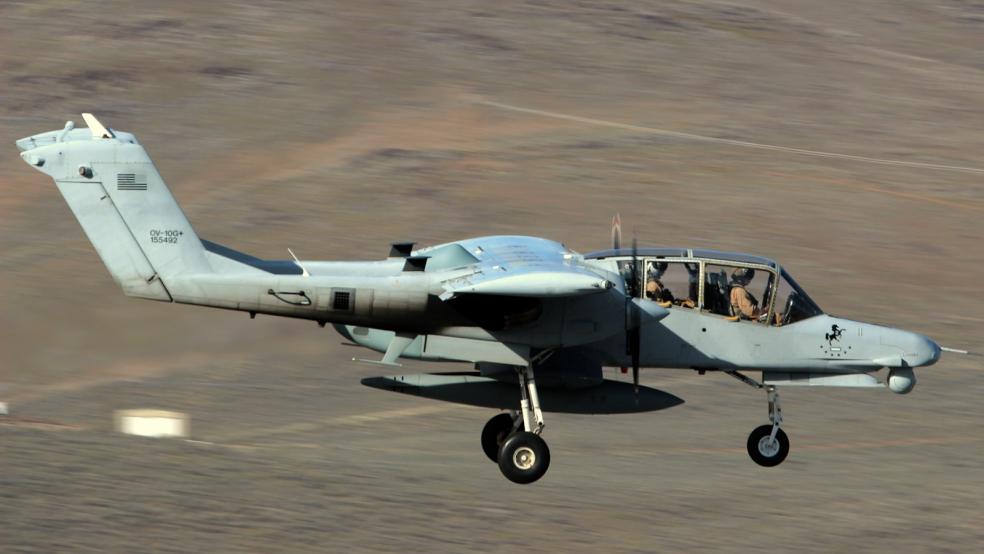Even decades-old warplanes can have an interesting second act, provided they get the right upgrade.
Many military observers were baffled when The Daily Beast reported that the Pentagon had deployed a pair of Vietnam-era OV-10 Broncos to the Middle East for three months to provide cover for ground troops fighting ISIS.
Related: 5 Attack Planes That Could Replace the A-10 Warthog
The small, twin-engine Bronco was used for reconnaissance and light air support in Vietnam, but wasn’t designed for the heavy-duty combat missions that the A-10 Thunderbolt II attack jet has handled in Iraq and Afghanistan. Some speculated the deployment was intended to help department leaders get a better grasp on the kind of warplane that should replace the A-10, affectionately called the “Warthog,” which the Air Force has targeted for retirement.
Now The War Zone is reporting that the Broncos were actually being used to find and kill Islamic State militants with the Advanced Precision Kill Weapon System (APKWS), which uses laser-guided 70 mm rockets.
Like other laser-guided rockets such as the Hellfire, the BAE-manufactured APKWS can be fired from close range or from miles away and can destroy enemy personnel and even lightly armored vehicles, minus the collateral damage that occurs with less-precise ordnance.
The Pentagon was apparently impressed with the Bronco’s performance, which The War Zone characterized as “almost freakish.” The planes enabled crews to find enemy soldiers, even those hiding in doorways and in dense brush, and kill them with sniper-like accuracy.
Related: Top Gun? The A-10 and the F-35 Will Finally Face Off
There’s no word on what’s next for the OV-10, though it seems likely that the Pentagon is working on the next iteration of the close-support program. The OV-10 could conceivably be brought back, but a more likely scenario involves using a more modern aircraft such as the A-29 Super Tucano in the low-and-slow – but deadly – support role.
The missile system deployed with the revised OV-10 is also used on other US aircraft. The Army and Navy currently use the APKWS on a host of helicopters and the Air Force employs it on the F-16 fighter jet.
At this week’s Navy League’s Sea-Air-Space Exposition near Washington, a senior BAE official told reporters that the $30,000 per unit APKWS is in high demand, with the U.S. signing off on sales to Iraq, Jordan, Lebanon, Australia and the Netherlands, according to Washington Business Journal.





